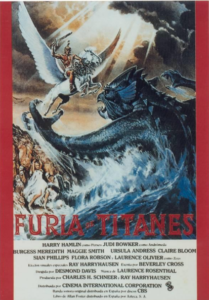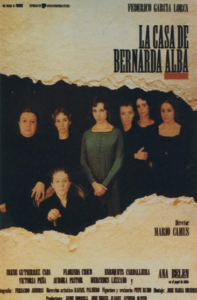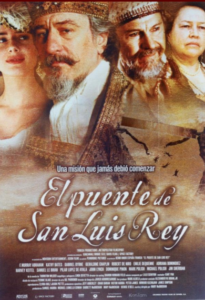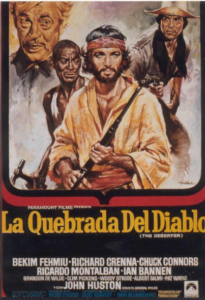List of shootings from 2011 to 2021
There have been hundreds of shootings that have been recorded in the last decade in the city, in the following link you can find a detailed list of each of them with their date and description.
Shooting of commercials
On the other hand, in the last two decades Antequera has served as a stage for the recording of numerous commercials and some music videos. Among the latter, undoubtedly the ones that most caught the attention of the media at the time, and especially of the press, were two promotional works of Madonna directed by Tarsem Singh, the first one entitled “Take a Bow” -presentation of the album “Bedtime Stories”- recorded partly in Ronda and in the bullring of Antequera in the autumn of 1994, with the presence of the American artist in these stages, and the second one “You’ll See” -from the album “Something To Remember”- filmed in the city of Antequera the following year, in this case with a double of Madonna.
Filming of series and movies
Between 1929 and 2004, at least 10 feature films and three episodes of television series have been partially filmed in Antequera, as mentioned above. As for the nationality of these productions, six are Spanish: La copla andaluza (Ernesto González, 1929), Nada menos que un Arkángel (Antonio del Amo, 1958), two episodes of the series Curro Jiménez (Francisco Rovira Beleta, 1975), La casa de Bernarda Alba (Mario Camus, 1986), an episode of the series La forja de un rebelde (Mario Camus, 1989) and Ellos robaron la picha de Hitler (Pedro Temboury, 2004). Two films were financed by Spanish production companies along with those of other countries, such as Semana Santa (Pepe Danquart, 2000), a co-production of Spain with Germany, the United Kingdom, France, Italy and Denmark, and El puente de San Luis Rey (Mary McGuckian, 2003), a co-production between the United Kingdom, France and Spain. On the other hand, there are two foreign feature films: an American production, Fury of Titans (Desmond Davis, 1980), and an Indian one, Awara Paagal Deewana (Vikram Bhatt, 2001). And two foreign co-productions, the first Italian-Yugoslavian, La quebrada del diablo (Burt Kennedy and Niska Fulgozi, 1969), and the second Italian-French-Swiss, Nel profondo paese straniero (Fabio Carpi, 1997).
In addition to the aforementioned film directors, many important interpreters have worked in Antequera, both nationally and internationally. We can highlight, among others, Sancho Gracia, José Sancho, Álvaro de Luna, Francisco Algora, Fernando Cebrián, Pilar Velázquez, Irene Gutiérrez Caba, Florinda Chico, Ana Belén, Enriqueta Carballeira, Pilar López de Ayala, the British Judi Bowker, the Americans Harry Hamlin, Burgess Meredith, Mira Sorvino, Kathy Bates, Fahrid Murray Abraham, the Italian Valeria Cavalli and the French Claude Rich and Olivier Martínez.
Main scenarios
The main scenes of Antequera requested and visited by the film industry are mainly related to its natural, historical-artistic and architectural heritage, and have been the following:
- Landscapes of the Vega, Infante Don Fernando Street, San Sebastian Square, etc. (Nothing less than an Arkangel, 1958).
- The Sierra del Torcal and its surroundings (La quebrada del diablo, 1969; Furia de Titanes, 1980; and the third chapter of the TVE series La forja de un rebelde, 1989, above all).
- The area of the Peña de los Enamorados, where sequences were recorded for the episodes El secuestro and La Dolorosa, in the first stage of filming of the TV series Curro Jiménez, filmed in 1975 under the direction of Francisco Rovira Beleta.
- The church of Los Remedios (La casa de Bernarda Alba, chosen for the beauty of its baroque altarpiece, where one cold autumn day in November 1986, the opening scenes of this film were shot during the funeral of Bernarda Alba’s husband).
- The bullring (Nel profondo paese straniero, 1997; Semana Santa, 2000; Awara Paagal Deewana, 2001; and El puente de San Luis Rey, 2003).
- Plaza del Portichuelo, Chapel of the Virgen del Socorro and the Royal Collegiate Church of Santa María (where brief sequences for the film El puente de San Luis Rey were shot in May 2003 ).
A review of:
FERNANDO VENTAJAS DOTE
D. in History
Research Group “History, Image and Memory of Andalusia” (HUM-548, Universidad de Málaga)




